Botox for Bruxism and Square Jaw in Maxillofacial Plastic and Reconstructive Surgery
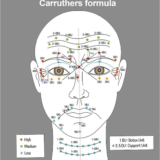
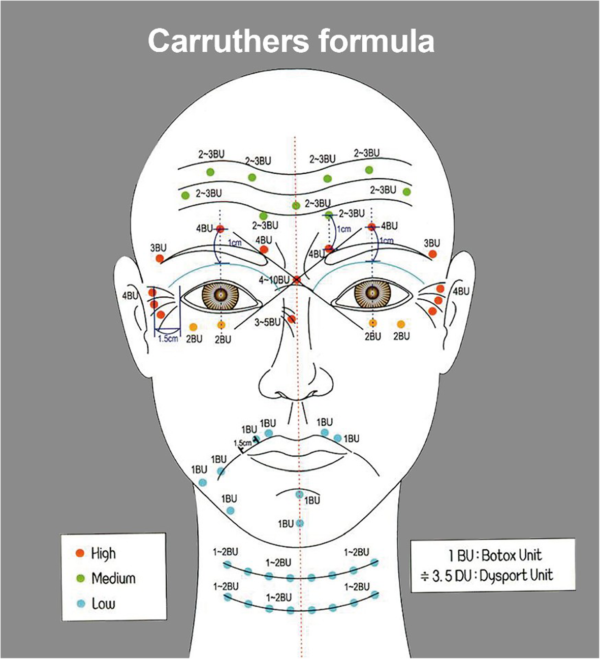
Oral and maxillofacial surgery, oral medicine, plastic surgery, dermatology, ophthalmology, general surgery, orthopedics, and other specialties all use Botox in Korea.
Since its first cosmetic usage by oral and maxillofacial surgeon Jan Carruthers in 1982, botulinum toxin has been utilized for the reduction of muscle mass and smoothing of the skin. It is already utilized in dentistry (oral and maxillofacial surgery, oral medicine), plastic surgery, dermatology, ophthalmology, general surgery, and orthopedic surgery in Korea. Botox is used for different purposes in various medical fields.
Potential for Botox in the Maxillofacial Area
Most frequently, glabellar lines, crow’s feet, grin lines, deep parallel forehead lines, and a square jaw are treated with injections of botulinum toxin. It is used to cure bruxism, soften the skin and rectify scars, treat keloids, alleviate tension headaches in patients with temporomandibular joint disease, and lessen the maximum bite force required for early loading of an instantaneous implant.
The dose is determined by the treated area
The total dose injected into each region is subject to variation across practitioners. When injecting, it’s important to keep in mind that factors including toxin dispersion, dose, needle direction, and bleeding can cause complications. It lessens the possibility of blepharoptosis, drooping lips, and facial muscle paralysis brought on by diffusion at important nerve-serving locations.
Potential local side effects include discomfort, short-term hyperesthesia, paresthesia, edema, erythema, and ecchymosis at the injection site. Don’t worry too much about it, though, since you can avoid all of these issues by using the correct injection technique, carefully administering the solution, applying cold to the affected area, and gently massaging the area (avoid rubbing). To reduce bruising, refrain from consuming aspirin or aspirin-containing non-steroidal anti-inflammatory medicines (NSAIDs) for 4–7 days prior to injection. Moreover, medications that impede neuromuscular activity or belong to the aminoglycoside class of antibiotics may intensify the effects of botulinum toxin.
Injections of botulinum toxin for bruxism treatment
Bruxism refers to the parafunctional behavior of clenching or grinding teeth, which can happen during the day or at night.
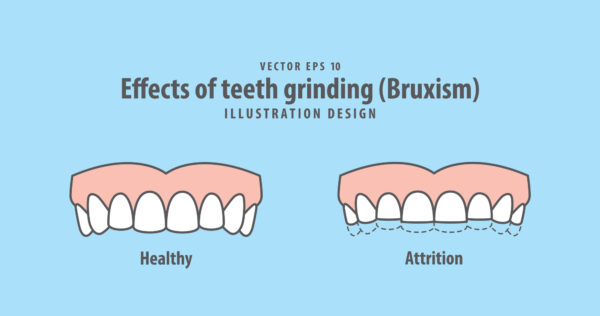
The parafunctional activity of clenching or grinding teeth, known as bruxism, can occur at any time of the day or night.
Botulinum toxin’s effectiveness in treating bruxism falls into one of three categories:
- Botulinum toxin injections are used to alleviate crow’s feet and frown lines around the eyes and forehead because of the muscle-relaxing effect of the toxin, which manifests itself as flaccid paralysis of the affected muscles.
- Muscle recession is caused by botulinum toxin, which paralyzes muscles, such as those used to treat the masticatory muscle or the calf muscle. This reduces muscle mass.
- By making good use of how botulinum toxin paralyzes and relaxes muscles, a pharmacological method is used to reduce trigger points in muscle fibers and reduce pain-causing chemicals in muscle cells, such as substance P and serotonin.
How botulinum toxin works to cure bruxism
Botulinum toxin is able to paralyze muscles because it acts on the neuromuscular junction and prevents acetylcholine from being released from nerve terminals. By using this, you can lessen the amount of force you apply when biting by as much as 20–30% in the masticatory muscle. If its broad pharmacological activity is used correctly in dentistry, botulinum toxin is likely to perform several roles.
Several patients who suffer from bruxism as a result of occlusal disharmony have found relief after undergoing occlusal adjustments. Reducing the stress on the masticatory muscles was found to be effective in treating bruxism; however, botulinum toxin is emerging as a new treatment option.
Botulinum toxin injection for square jaw treatment
The use of botulinum toxin is becoming more popular, and its method is evolving in a variety of ways. At the moment, square jaw reduction is the procedure that oral maxillofacial surgery is most interested in. While the idea and process of square jaw reduction are not as complicated as the usual anti-wrinkle treatment, it is true that the doctors who are doing the procedure keep expanding. Botulinum toxin for square jaw reduction is a useful adjunct to surgical correction.
Typically, there are three major methods of treatment: botulinum toxin alone, botulinum toxin and square jaw reduction, and square jaw reduction alone. Sonography, skull PA, and panorama imaging determine the treatment plan. A square jaw reduction (mandibular angle contouring surgery) in combination with botulinum toxin treatment compensates 60% of the total treatment, while botulinum treatment alone compensates 30%.
Dentox is a course designed to train medical personnel in safe and effective Botox injection techniques. Visit https://dentox.com/live-courses/ if you’re looking for in-person training, or browse https://dentox.com/all-courses/botox-training/ for online choices.
Botox: Can It Be Diluted with Sterile Water?
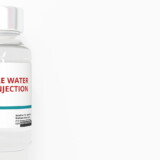
Do you ever wonder if sterile water can be used to dilute Botox? How this question is answered may have far-reaching effects on the reliability and efficiency of Botox treatments. In this post, we’ll discuss diluting Botox with sterile water so you can make educated judgments regarding your cosmetic procedures.
Botox Diluents That Are Highly Suggested
Botox should be diluted with a sterile, preservative-free saline solution, as recommended by the manufacturer. Saline solution is utilized frequently in the medical field since it is compatible, safe, and widely used. There may be risks to the substance’s efficacy and safety if the prescribed diluent is not used. In order to get the best possible outcomes and reduce the risk of complications, healthcare providers should follow the instructions provided by the manufacturer.
Sterile Water for Diluting
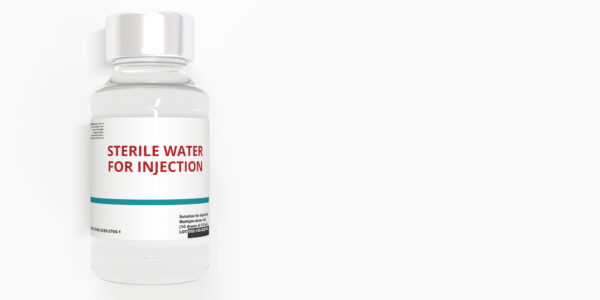
Because of health and safety concerns, Botox should never be diluted with sterile water.
Because of its high level of purity and safety, sterile water is frequently employed in the medical and cosmetic industries. However, there are factors to consider and restrictions to utilizing sterile water as a diluent when diluting Botox.
Sterile water’s absence of bacteria and other pollutants makes it ideal for use in surgical and beauty treatments. It’s a solvent that’s utilized in many different treatments, including diluting Botox to the right dose.
While diluting Botox with sterile water, there are a few things to keep in mind. One of these is reliability because the product’s stability and effectiveness are preserved when the suggested diluent is used. The diluent should have an osmolarity that is similar to physiological circumstances. Errors in dilution computation and measurement are possible if proper precautions are not taken.
Botox should not be diluted with sterile water because of safety issues and potential dangers. Dilution reduces potency and introduces the possibility of contamination. If you don’t use the recommended diluent, you can get unexpected results.
Methods for Appropriate Dilution
Botox must be diluted properly to guarantee secure and successful results from treatments. These complete guidelines for diluting Botox with the suggested diluent will help you get optimal results every time.
- Sterilize your workspace to get things going. To avoid contamination, always use a clean, sterile mixing container and utensils.
- Determine the amount of diluent needed depending on the concentration-to-water ratio. Refer to the manufacturer’s instructions for the appropriate dilution ratio, as it may differ based on the Botox product and treatment goal.
- Use a syringe that has been properly calibrated to measure the required amount of diluent. Maintaining the correct concentration and achieving consistent outcomes requires precise measurement.
- Go for the side of the Botox container rather than the powder itself when you slowly inject the diluent. This cautious method protects the efficacy of Botox and reduces the likelihood of unnecessary foaming.
- After adding the diluent, the Botox powder should be carefully stirred inside the vial. Avoid aggressively shaking the container, since doing so may cause the solution to develop unwanted bubbles and become unstable.
- Do not stir the mixture for several minutes to ensure thorough reconstitution. The Botox powder will dissolve, and the solution will become uniform throughout this period.
- Once the diluted Botox solution has been reconstituted, gently dispense the required dosage into a new, sterile syringe. To administer the appropriate dosage to the treatment region, guarantee precise measurement.
Adverse Reactions and Possible Dangers
Botox can have serious consequences if diluted incorrectly, so it’s important to know what those consequences are before getting the injections. By being aware of these dangers, medical personnel can take the appropriate measures to protect their patients. The need for post-treatment monitoring and the occurrence of frequent and uncommon adverse responses will be discussed.
Potential Adverse Effects and Dangers:
- Injection Site Reactions: Injection sites may become temporarily inflamed, bruised, or painful. The majority of the time, these reactions aren’t severe and go away after a few days.
- Headache: After receiving Botox, headaches are possible, though rather unusual. Usually, they don’t last long and go away on their own.
- Ptosis: Ptosis, or temporary drooping of the eyelid, can occur after receiving Botox injections near the eye area, but this is quite unusual. In most cases, this clears up after a couple of weeks.
- Flu-Like Symptoms: Some patients may experience mild flu-like clinical signs, such as fatigue, weakness, and body aches.
- Allergic Reactions: Botox allergies are uncommon but possible. Possible symptoms include a rash, itching, wheezing, and/or swelling of the face, lips, tongue, or throat. In such a situation, urgent medical care is required.
The Significance of Post-Treatment Monitoring:
- Following Botox treatments, medical personnel should thoroughly monitor patients to identify and treat any potential side effects.
- After the treatment, patients should be instructed to report any sudden or serious symptoms, such as extreme pain, trouble breathing or swallowing, or considerable swelling.
- It is feasible to reduce potential dangers and guarantee the best outcome for the patient with prompt intervention and competent management.
Conclusion
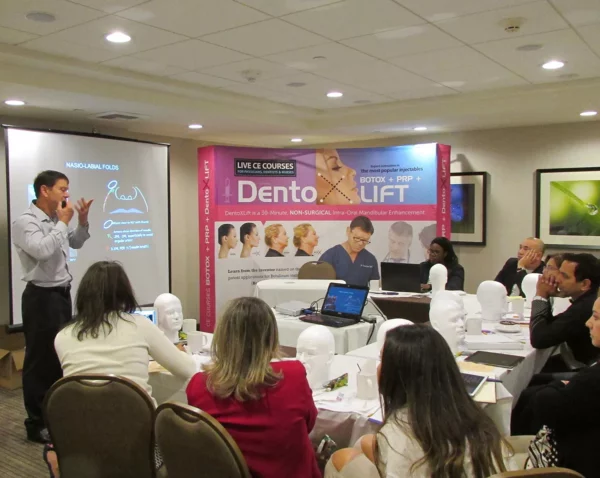
Maintaining a focus on patient safety through consultation with an expert, participation in appropriate training, and knowledge of current practices and policies can lead to your success.
You can reach your goals while lowering your risk profile by ensuring consistent dilution processes and following the manufacturer’s instructions. For the safety and efficacy of your cosmetic procedures, it is highly recommended that you avoid injecting botox into sterile water and that you speak with a certified specialist.
You will succeed as long as you put your patients’ health first. Put their safety first by consulting a specialist, taking pertinent training classes, and being up to date with current procedures and policies. You will be able to navigate the world of Botox and make informed decisions regarding the treatments by doing this.
Dentox is a program that teaches healthcare providers how to safely and effectively inject Botox. Learn the latest, most effective techniques for enhancing your clients’ health. For information on our virtual patient training courses, please visit https://dentox.com/all-courses/botox-training/, and for specifics on our live training sessions, please visit https://dentox.com/live-courses/.
Why You Should Take Courses in Botox and Fillers
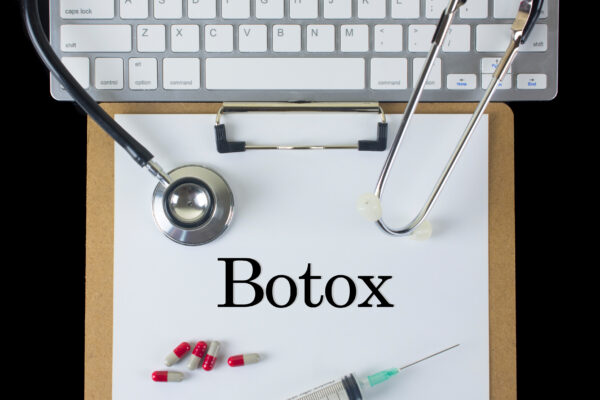
Aesthetic procedures like Botox and fillers have become increasingly common in recent years.
The use of Botox and fillers for aesthetic purposes has skyrocketed in popularity in recent years. This has led to a rise in interest in Botox and filler training programs.
Read on to discover why attending intensive training in Botox and fillers is beneficial.
What exactly are Botox and fillers?
Botox and fillers are two cosmetic procedures that can lessen the visibility of creases and wrinkles. Fillers are compounds that are injected under the skin to enhance volume, whereas Botox is a neurotoxin that momentarily paralyzes muscles.
The Value of Botox and Filler Training
- Develop your skill set. A Botox and filler training course can help you become a more well-rounded medical professional. Gaining knowledge of Botox and fillers will enable you to provide a wider range of services to your clientele, which could lead to an increase in your business’s earnings.
- Enhance the prospects for your career. Career-wise, learning how to administer Botox and fillers is a definite plus. Having Botox and filler training on your resume can help you land a promotion at work or open doors to new career opportunities.
- Obtain an edge over competitors. Aesthetics is a cutthroat field, and knowing how to administer Botox and fillers can set you apart. There has been a recent uptick in the popularity of cosmetic procedures, making it all the more vital to keep abreast of the most recent developments in the field. Botox and filler courses can help you do just that.
- Increase your self-assurance. If you want to feel more secure in your abilities as a medical professional, taking a course in Botox and fillers is a great way to do so. Your self-assurance as a provider of Botox and fillers will increase after receiving the appropriate training. It’s good for business since it increases the likelihood that customers will be satisfied and will spread the word.
- Maximize your potential for financial gain. Last but not least, learning how to use Botox and fillers can boost your earnings. As your knowledge and experience grow, so will the price tag of your services. You can boost your business’s bottom line by broadening your customer base and the range of services you provide.
Botox and filler course types
There are many different kinds of Botox and filler training programs, each catering to a different audience and offering a different depth of knowledge.
- Basic courses. Beginners in the aesthetics industry can benefit from taking introductory courses in Botox and fillers. The fundamentals of Botox and filler administration, such as injection methods and safety precautions, are covered in detail throughout these training sessions.
- Advanced courses. Courses in advanced Botox and filler administration are intended for medical professionals who already have some experience with the procedures. These classes go into greater detail on more complex methods, with an emphasis on how to achieve desired aesthetic outcomes.
- Combination courses. Courses that cover both Botox and fillers are available. Professionals who want to broaden their service offerings to clients may find these classes invaluable.
- Online courses. Practitioners who may not have ready access to in-person training can benefit from the availability of online Botox and filler courses. With these courses, you can learn at your own pace and on your own schedule while still getting the same quality education as you would in a traditional classroom setting.
Finding the Right Botox and Filler Training
There are a few things to think about when deciding on a Botox and filler training program:
- Reputation. The credibility of the training provider should be taken into account. It’s important to find a training provider with a good reputation and a history of creating competent professionals.
- Instructor qualifications. It’s also crucial to think about the experience and expertise of the course’s instructors. Instructors should ideally be successful practitioners who have been teaching for some time.
- Course content. The material covered in class is also a major factor. Seek training that addresses not only how to inject Botox and fillers, but also proper safety procedures and how to get the desired aesthetic outcomes.
- Hands-on training. Botox and filler courses that include practical experience is essential. Try to find classes where you can get plenty of hands-on experience giving the procedures in a controlled setting.
- Certification. Last but not least, check that your chosen program will award you with a certification upon completion. Earning a certification demonstrates to clients and employers that you have the skills necessary to do the job.
Conclusion

Medical practitioners benefit from Botox and filler courses. These benefits include boosting self-confidence, professional possibilities, and earnings.
In conclusion, there are many benefits to taking a course in Botox and fillers for medical professionals. These benefits range from enhancing one’s skill set and career prospects to fostering greater self-assurance and increasing one’s earning potential. When deciding on a course, it is important to think about the credibility of the training provider, the experience and expertise of the instructors, the materials covered, the opportunities for practical application, and the credentials earned. Aesthetics is a growing field, and with the right education, you can join it as a skilled and prosperous professional.
Dentox can instruct you in the art of injecting Botox and filler, allowing you to offer your clients and customers truly remarkable results and increase your practice’s profits. Having a positive experience with you may encourage patients to return for additional cosmetic work.
Dr. Howard Katz, one of the most well-respected injectables educators in the country, offers his courses in person, online, and on demand. Check out https://dentox.com/all-courses/ if you are interested in virtual learning, or https://dentox.com/live-courses/ if you would prefer hands-on experience with real patients. Develop expertise that has a positive effect on patient’s health, appearance, and vision and thereby enhances their quality of life.
The Best Ways to Maintain a Regular Self-Care Routine Over Time
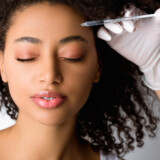
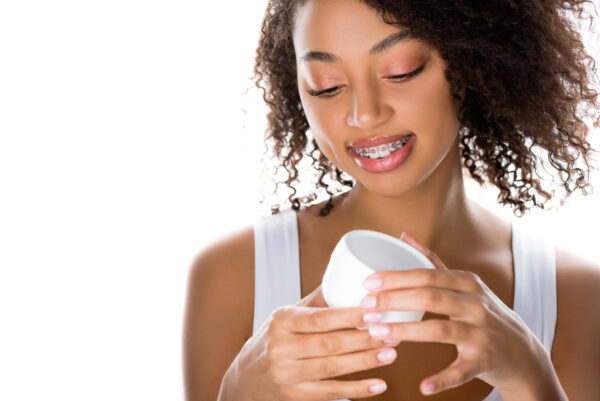
Dermatologists recommend that patients start establishing positive habits related to self-care and preventative health while still in their twenties.
Slow and steady wins out when it comes to skincare. There is no doubt that getting older comes with a lot of stigma in today’s culture. The discovery of your first gray hair or fine line counts, as does reaching a certain age or starting a new decade. Dermatologists have developed in-office treatments for a variety of signs of skin aging, including fine lines, hyperpigmentation, and acne scars. Many people in their twenties and thirties believe that getting in-office treatments as soon as possible is essential to maintaining their skin’s youthful appearance. The more treatments one undergoes to counteract the visual effects of aging, skin discoloration, scarring, and wrinkling, the better one’s appearance must be, right? Okay, not exactly. Experts advise creating slower routines by taking deep breaths, slowing down, and picking skincare deliberately.
Fundamental to the aging process is how skin ages
The body’s largest organ, the skin, is substantially different in people under 40 than in people of middle age or older, necessitating extremely different procedural and treatment requirements. Many dermatologists believe that the best way to preserve skin health and youthfulness in one’s twenties and thirties is to take things slowly and gently when it comes to skincare treatments and in-office procedures. Procedures for maintaining elasticity aren’t necessary for patients in their 20s and 30s because the body is already producing collagen and their skin has different needs when it keeps a considerable percentage of its natural elasticity.
Dermatologists advise their patients to prioritize healthy skincare routines as self-care and proactive health measures by developing these habits by the time they are in their 20s. Most importantly, regular application of sunscreen and other products with SPF values is required as part of at-home regimens to protect skin from UVA and UVB light damage, which worsens fine lines, wrinkles, hyperpigmentation, and skin cancer. In collaboration with their dermatologist, patients can create intentional skincare regimens that include deliberate at-home routines and slower-paced procedures. Although the market for skincare products and advertising can be overwhelming, making deliberate and well-informed decisions regarding the advantages of prioritizing well-being through slower skincare can provide healthier skin and better outcomes over the long term.
Botox and injectable treatments need to be done gradually
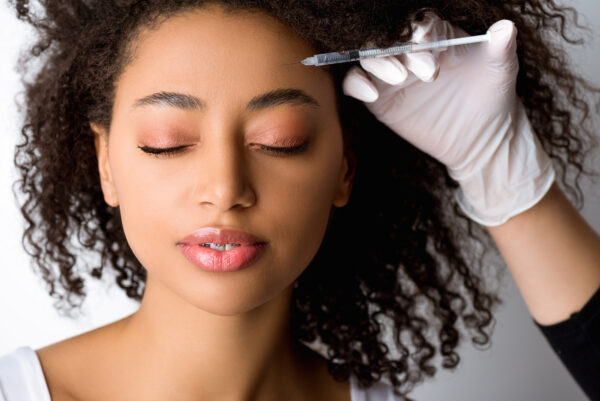
Botox, or Botulinum Toxin, is a popular in-office skincare treatment that temporarily reduces fine lines, wrinkles, and textural indents from pitting and acne scars.
Botox, or Botulinum Toxin, is a popular in-office skincare treatment intended to temporarily minimize the look of fine lines, wrinkles, and textural indents due to pitting and acne scars. Teenagers are restricted by age regulation from getting the treatment because of the chemical solution and possible side effects, but people in their 20s and older can safely get the treatment to make their skin firmer. But people usually shouldn’t use the procedure at full strength until they are at least in their 30s.
If fine lines and wrinkles begin to show, they can be prevented using Botox injections. Patients must be 25 years of age or older to receive a Botox injection, while younger patients may consult with medical professionals about getting the procedure. Ensure it is performed by a licensed healthcare professional. Medical professionals who are adept at administering Botox injections can help their patients avoid an unnatural look.
Dentox helps medical professionals learn how to administer Botox correctly and securely. You can sign up for a seminar at one of our many accessible U.S. sites, or you can learn with us online or on-demand in real time. Visit https://dentox.com/live-courses/ and https://dentox.com/all-courses/botox-training/ to read more about our live and online training options, respectively.
Enrolling in the top botox training programs available can help you succeed as an injector. Participate in a course as soon as possible to learn from seasoned professionals about the highly sought-after expertise of botox. You may become a certified botox expert and work wonders on every patient who comes through your door.
Leave your stress behind and welcome healthy skin
One alternative approach to addressing skincare issues is the growing popularity of mindfulness practices, which have been lauded for their ability to help people stay in the present moment and reduce stress, anxiety, and other hormone-induced states that can lead to skin problems like acne and premature wrinkle development. Studies have shown that stress hormones like cortisol and corticotropin-releasing hormone (CRH) can cause acne in adults. Even though there are other things that can cause adult acne, stress is a common cause that can make a person less attractive, less happy, and more.
Relaxing your body, mind, and emotions through deep breathing can have a beneficial influence on your skin and pave the way for calmer, more present skincare routines that are based on appreciation for your skin rather than anxiety about its perceived flaws. Your morning and nightly skincare rituals are prime opportunities to practice mindful awareness and create a slow skincare routine that is rooted in genuine affection for your skin and a desire to treat it with the utmost care. Find a mindfulness coach, teacher, or class in your area, like a dermatologist who specializes in skin, to help you set up your own practice. You can also look online for guided videos.
Exercise After Botox Injections: Is It Safe?


Botox is a cosmetic procedure that gives the skin a younger appearance.
The most common places for wrinkles to form, like the forehead and the area around the eyes, are treated with botulinum toxin type A.
Botox is a useful treatment option for a variety of conditions, including excessive sweating and migraines.
Whether or not you can exercise after getting Botox is a question often brought up, especially by those who are passionate about physical fitness.
In addition to answering that question, this article will also discuss other post-treatment guidelines you should adhere to in order to ensure the best skin possible.
Does working out have an effect on Botox?
Three main reasons should prevent you from working out after getting Botox:
It exerts a force at the injection site
Doctors recommend waiting at least 4 hours before touching your face after getting Botox.
Any additional force may cause the Botox to spread out of the injection site. It’s also wise to refrain from touching your face for the time being, as the area is likely still sensitive and tender.
It’s possible that you’re putting unnecessary strain on your face if you regularly wipe away perspiration during exercise.
Furthermore, certain sports like cycling or swimming call for equipment that puts pressure on the face or head, which can lead to injection site irritation.
It improves circulation
When you exert yourself physically, your heart rate rises dramatically. While beneficial to heart health, that will have an adverse effect on your Botox.
As blood flow increases, Botox may spread from its original injection site. Therefore, it has the potential to temporarily paralyze muscles in the vicinity.
If hypertension is given, the area at which the injection was given may swell or bruise.
It’s too physically demanding
After having Botox administered, it is recommended that you maintain the same position for your head as much as possible. There is a possibility that physical activity will result in Botox becoming more widespread.
You might only need one downward dog to achieve less-than-ideal results because this occurs frequently, even with low-impact exercises like yoga and Pilates.
Exercise can cause facial strain, which is another issue to consider.
After getting Botox, how long should you rest before exercising again?
While you should always listen to your physician, a good rule of thumb is to wait at least 4 hours before working out. Taking any kind of supine position is included in this.
However, you shouldn’t wait more than 24 hours at the absolute most. Waiting up to a week before engaging in any kind of strenuous activity is something that many medical professionals will advise patients to do in order to err on the side of caution.
After receiving Botox injections, are there any other activities I should avoid?
Your doctor will go over some rules with you, both before and after your Botox treatment.
In addition to keeping your hands off your face, you should also refrain from doing the following:
- Having a supine position
- stooping down
- consuming alcohol
- having too much caffeine
- applying any kind of pressure or rubbing to the region
- showering or bathing in hot water
- utilizing any painkillers that thin blood
- putting yourself in situations where it’s too hot, like in saunas, tanning beds, or the sun
subjecting yourself to very low temperatures - putting on makeup
- using Retin-A products that contain tretinoin
- spending your very first night sleeping on your face.
- undergoing a facial treatment or any other type of facial procedure during the first two weeks of the treatment.
- flying
- applying a spray-on tan
- making use of more force when washing one’s face or removing makeup
- putting on a bathing cap
- having one’s eyebrows purged via one of three methods: waxing, threading or tweezing
Which symptoms or signs call for a visit to the doctor?
Although they are uncommon, Botox can cause serious side effects. The best course of action if you experience a Botox-related adverse reaction is to contact your healthcare provider or go in for an emergency visit.
Watch out for the warning signs and symptoms listed below:
- eyes that are puffy or sag
- respiratory difficulty
- hives
- more discomfort
- heightened swelling
- rash
- blistering
- dizziness
- feeling dizzy
- muscle wasting, especially where no injections were administered
- dual perception
Takeaway
Botox can make your skin appear smoother and younger by temporarily relaxing the muscles that cause wrinkles. This results in fewer wrinkles and a more youthful appearance. In order to get the most out of the treatment that you just finished, you need to make sure that you follow all of your doctor’s instructions.
There are a number of drawbacks that can be avoided by waiting at least 24 hours before engaging in strenuous exercise. An abnormally high heart rate, for instance, could hasten Botox’s metabolism and cause it to spread to unintended areas of the body.
Do not hesitate to contact your doctor or go see them in person if you experience any severe side effects, such as difficulty breathing, blistering, or extreme swelling.
Taking a day off from the gym may be difficult for some, but it’s necessary to avoid injury and maximize results. Consider it, at the very least, as a great justification for a well-earned day of rest.
Extending Our Understanding of “Baby Botox”
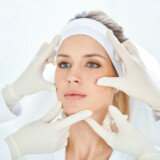
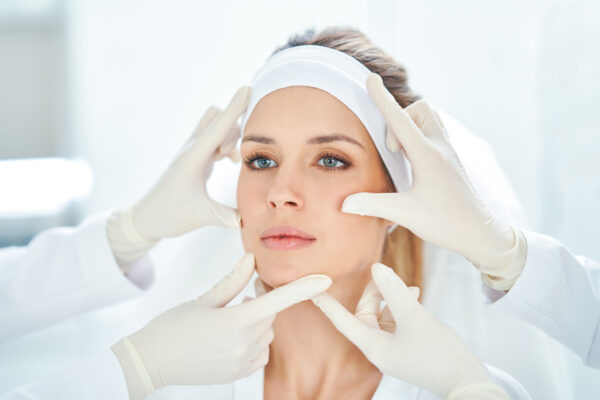
The term “baby Botox” is used to describe the trend of administering smaller doses of Botox (fewer units) in each treatment area.
Baby botox? What is that?
The term “baby Botox” refers to the practice of injecting smaller amounts of Botox (fewer units) into each treatment area. Getting a “baby” Botox treatment means going for a less drastic approach, aiming for a smoother appearance without completely freezing the face. This is essentially the same as regular Botox, only used in lower concentrations.
Smaller doses of the toxin are strategically placed only in the areas where they will do the most good. In comparison to full Botox, baby Botox is less expensive and requires less upkeep, but it does not last quite as long.
The Advantages, Disadvantages, And Adverse Effects of Baby Botox
Those who choose to get baby botox can return to work immediately afterward, making it a convenient lunchtime procedure.
The effects should become noticeable after 10 days, but they will gradually fade over the following two months. Most people who try baby Botox end up loving its subtlety so much that they want to gradually increase their dosage.
Additional advantages include fewer side effects compared to standard Botox and greater control over facial expression and movement.
The following are some of the potential negative effects of baby Botox:
- Headache
- Asymmetrical results
- Bruising around the injection site
- Swelling
An estimated 1 in 6 people who get Botox experience adverse effects such as bruising, headaches, nausea, and “frozen” features, as well as muscle stiffness, pain, dizziness, and, in rare cases, a heart attack, according to a study from 2021.
One Reddit user reported feeling anxious after getting Botox. After the procedure, “I did not like my face,” he wrote. “It was lifeless; I could not express myself naturally because my face felt stifled. It caused me a lot of worry.”
There were reports of “unrelenting headaches” from one person. “Botox can produce headaches for a significant amount of time,” he added. “After that, I suffered from a terrible migraine that wouldn’t go away for approximately three weeks. It was a terrible decision that I soon came to regret.”
Others complained of severe ringing in the ears, mild drooping of the eyelids, chest pain, nausea, and blurred vision.
Baby Botox Cost

Depending on the clinic and the number of baby Botox injection sites, the prices range from £200 and up.
Prices can range from £200 and up, depending on the number of injection sites and the clinic providing the service.
Finding a competent and trustworthy medical professional is crucial. Validate their registration to make sure they are eligible. Get referrals from people you trust, and never go to a Botox party.
Botched Celebrity Botox Procedures
Courteney Cox is just one of many celebrities who have been open about their Botox and filler regrets in the past. In 2022, she told The Sunday Times Style: Somewhere along the line, you decided, “Oh, I am changing. I have noticed that I am starting to look older. I spent a lot of time and effort seeking that [youthfulness]. I had no idea that all the injections and other alterations I would make to my face over the years would make me look so bizarre.”
Simon Cowell also admitted to The Sun that his love of Botox and fillers had gotten a little out of control at one point: “There was a stage where I might have gone a bit too far. In the same interview with The Sun, Simon Cowell revealed that his obsession with Botox and fillers had gotten out of hand: “At one point, I may have overstepped my bounds. The other day I came upon an old photo of myself and, at first, I couldn’t tell if it was really me or not.”
To see positive results with injectables, you should seek professional guidance on how to achieve a natural look rather than one that is overdone. Dentox is a renowned training program for botox injections founded by Dr. Howard Katz, a specialist in the field who has received consistent appreciation from his students, peers, and the industry as a whole. Dr. Katz, a licensed plastic surgeon, complements the already impressive staff.
Get the highly sought-after skill of botox injection from seasoned professionals by enrolling in a course right away. If you invest the time and effort, you may become a certified botox expert and perform miracles on every client who walks through your door. Online Botox training may be found at https://dentox.com/all-courses/botox-training/, while in-person training with live patients can be found at https://dentox.com/live-courses/.
Should I be Concerned about Botox Injection Speed? Injection Facts

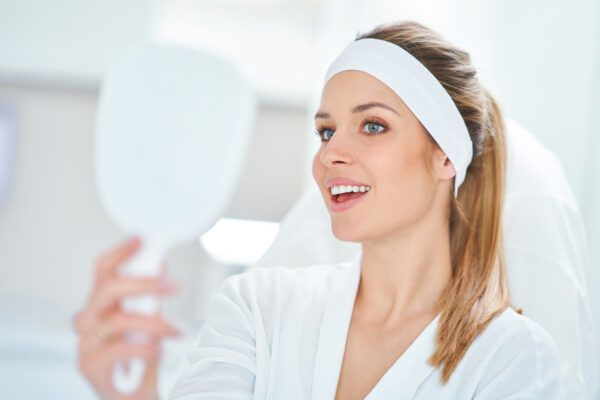
Every injector and medical practitioner injects Botox a different way, but the goal is to get the desired results.
You’ve probably seen doctors who take their sweet time injecting patients with Botox. You’ve probably also seen doctors inject Botox fairly quickly. Is the urgency of completing them speedy?
Every injector and every medical professional has their own method, but the most important thing is to achieve the desired outcomes.
Patients usually inquire as to the rationale behind lightning-fast Botox and other Botox product injections.
Because the brain can only withstand a certain level of pain, by the time I have completed administering the injections, the patient has only felt a minimal amount of agony in the location that was initially injected.
The effectiveness of Botox injections is contingent on the skill of the injector as well as the location of the injection site within the patient’s body. Patients who were unhappy with their outcomes frequently commented to me, “See what Botox did to me.” However, the injector who was in charge of giving them the injection was to blame for the issue, not the drug.
Botox is not meant to paralyze the face but rather to enhance it. It is time to look for a new injector if you are unhappy with the appearance of your Botox treatment.
Because of the many injections, these patients have received, I am confident that a significant number of those who suffer from facial dysmorphia syndrome (FDS) are unaware of the degree to which their appearance has been altered. Take a picture of yourself with your smartphone before you start using neurotoxins so that you have a record of your appearance before you begin using neurotoxins. This provides a standard against which to measure the effects of an injection.
I believe that if 20 to 40 percent of people did this, there would be a significant increase in the number of patients who did not appear to be overdone or distorted.
It is possible to incorporate Botox injections into even the busiest schedule because the treatment only takes a few minutes and there is no downtime required afterward. You can get an injection while you are waiting for your children to finish their piano lessons or during your lunch break. The possibilities for the schedule are virtually limitless.
Dentox is a program that educates medical practitioners on the most effective, safest, and fastest times to administer Botox injections to their patients. This education is provided through the Dentox program. Dentox has the potential to assist you in growing your company while simultaneously enhancing the care you provide to your patients.
Dr. Howard Katz is well recognized as a leading authority on injectable training. In addition to teaching in a classroom setting, he also posts video recordings of his lectures and course materials online. You can learn about Botox online at https://dentox.com/all-courses/botox-training/ and in person with actual patients at https://dentox.com/live-courses/.
A Deeper Dive into the TikTok “Botox in a Bottle” Craze. Would it be a viable alternative to Botox?


Over the years, TikTok has become a beauty trend hub.
TikTok has evolved over the past several years into a go-to resource for the latest and greatest in beauty trends. TikTok has gained notoriety as a breeding ground for do-it-yourself beauty and skincare trends, such as the use of salt water to treat acne scars, a low-cost remedy that many young users jumped on. Another example is the use of cinnamon oil as a lip filler, whose safety has sparked debate among beauty influencers and dermatologists.
There’s little wonder that new fads are making their way into people’s daily lives, what with the thousands of videos being released every day. One of the most popular beauty hacks, “Botox in a Bottle,” claims to reduce the appearance of fine lines and wrinkles without the expense or inconvenience of injectables administered by a professional.
This trend of combining two powerful skincare serums has gone viral, with over 16 million views under the hashtag #botoxinabottle. Customers who have used the two products say they see results similar to Botox, including supple, radiant skin with fewer wrinkles. These are far cheaper than getting Botox injected, which may cost as much as $15.00 per unit.
Sarah Palmyra, a beauty content creator, first brought attention to the Botox-in-a-bottle craze when she claimed to have found a combination that effectively smoothed the wrinkles between her eyebrows after using it daily for just one month. Dermatologists picked up the fad soon after young women on TikTok started buying the two items and blending them together to see for themselves. Because of its apparent efficacy, some have wondered if it could one day replace Botox injections.
The Science Behind Botox in a Bottle
Botox in a bottle is made by applying a combination of Matrixyl 10% + HA High Strength Peptide Formulation and a few drops of Argireline Solution 10% to the skin twice daily. The name “Topical Botox” comes from the fact that its effects, when used daily, are similar to those of Botox treatment.
They are both clear, white liquids that absorb quickly into the skin and do not leave behind any sticky residue.
Argireline’s active ingredient, acetyl hexapeptide-3, is a peptide that relaxes facial muscles by acting on neuromuscular junctions. Argireline has been demonstrated to stimulate the body’s natural production of collagen and lessen the appearance of fine lines and wrinkles. It has a similar effect to Botox in that it reduces muscular action by inhibiting the connection between a neuron and the muscle.
Experts concur that the serum cannot penetrate the skin deeply enough to have a lasting impact, in contrast to Botox, which is injected directly into the targeted facial muscle. Nonetheless, individuals who have noticed this trend online are eagerly trying the serum to see if it has the desired rejuvenating results.
Topical Treatments vs. Botox: A Comparison
There are several discrepancies in the outcomes of the Botox-in-a-bottle fad. Users have reported mixed results: some say the topical treatment did not prevent muscle movement in their skin, while others say that after using it daily, they no longer had frown or smile lines.
Those who are hesitant to try injectables, have a fear of needles, cannot afford Botox at the moment, or are simply curious as to how it might feel and look before committing to getting it would likely be satisfied with the results of this procedure.
Is it really worth trying out this TikTok craze? It’s a low-cost and time-saving option. These products are great alternatives to retinol and other acid-based anti-aging serums if you have sensitive skin.
Many additional products have the same effect as Botox. They boost collagen and elastin production while exfoliating the skin. There are a number of other skincare items that help the skin look younger and healthier, such as replenishing moisturizers and physical sunscreens. It is essential to choose the perfect product for your skin type and use it regularly if you want to see results from your beauty regimen.
What Benefits Should I Anticipate from Botox versus Topical Botox?
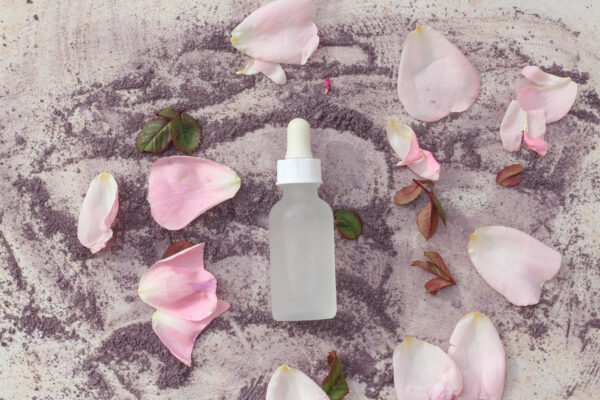
Results from Botox in a bottle are slower in coming and don’t last as long.
Treatment with injectable Botox and topical Argireline or Matrixyl have different time frames in which their effects can be seen.
During a Botox treatment session, a very fine needle is used to inject very small amounts of diluted Botox® into the desired muscles. It could involve just one trouble spot on the face or several. Treating wrinkles with Botox takes very little time and causes minimal discomfort. The effects of Botox injections can be seen as early as 4–5 days after treatment, with full results appearing anywhere from 2–4 weeks after the procedure. While some of its effects may subside after 4-6 months, it is advised to continue the treatment regularly to reap its long-term advantages.
On the other hand, results from Argireline and Matrixyl take a lot longer and are not always consistent. Since irritation is a possibility, you must use the serums every day and monitor how your skin reacts. Botox in a bottle takes longer to work and produces less effective, short-lived results.
Dentox is a course in which medical personnel can learn the ins and outs of giving Botox injections to their patients. Learn how to improve people’s health, appearance, and psychological state through your practice. Your ability to aid your patients depends on your level of training. Visit https://dentox.com/live-courses/ and https://dentox.com/botox-training/ for details on upcoming in-person and online patient training programs, as well as registration links.
Botox: How Long Before You Feel Its Effects?
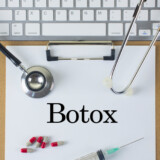

A 2016 study indicated that Botox’s full effects were seen and felt 10 to 14 days following the operation, making it safe and easy.
For temporary relief from moderate to severe frown lines, crow’s feet, and forehead lines, many people turn to Botulinum toxin type A, more commonly known as Botox, a prescription medication that temporarily paralyzes facial muscles.
A 2016 study from a reputable source found that the full effects of Botox could be seen and felt 10 to 14 days after the procedure, making it a relatively safe and simple procedure.
Let us look at how quickly you will start to see results from Botox and how long it takes to feel the full effects.
When Botox Kicks in
In most cases, the results of a Botox injection will become apparent within 3–4 days. The vast majority of patients will experience improvement after 10-14 days, but in order to achieve the best possible outcomes, they should wait the full 14 days.
The effects typically last for 3 months, though this may be longer or shorter depending on factors like the area treated and the frequency of injections.
Several variables affect how quickly Botox begins to work, such as the area treated, the number of injections, and the dose. It seems that the muscle effects last longer the more a dose is applied to a given area.
Therefore, the ‘natural’-looking, lower-dose option may only last for 6-8 weeks, while the longer-lasting, higher-unit option may last for over 6 months but ‘paralyze’ the appearance of muscles like the frown lines.
The dose, desired appearance, and duration are all factors that you and your injector should discuss before starting treatment in order to establish realistic expectations.
Timeline for crow’s feet, between-the-brows, and forehead wrinkles
Botox is most frequently used to treat wrinkles in the forehead, the area around the eyes (crow’s feet), and the space in between the brows. Generally speaking, faster results are achieved with finer lines.
Fine lines on the forehead and crow’s feet around the eyes are two areas where patients often report seeing the most rapid improvement.
If the lines are particularly deep or etched, the process might take longer. These include brow furrows and deeply etched or very deep forehead furrows.
Furthermore, neither the location of the injection nor the amount of time it takes to see results has an impact on the outcome of a Botox injection. Rather, it depends on the product’s concentration and the method used to inject it into the muscle.
It is possible that larger muscles that receive fewer units, like the forehead, may appear to react more slowly than smaller muscles, like a weaker frown, that receive more units.
How come results are not immediate?
While you may begin to see improvements as early as the third or fourth day, it may take several weeks before you see the full effects. Why the long wait?
Botox acts by binding at the motor endplate, the junction between muscle and nerve. The nerves “bark orders” to the muscle, telling it to contract, and the nerve’s motor endplate acts as a megaphone, amplifying the nerve’s message.
Botox prevents muscle contraction by binding to a SNARE protein at the motor endplate, preventing the transmission of chemical signals (the shouting protein, also known as acetylcholine) that trigger muscle contraction.
Because Botox prevents the release of acetylcholine, the muscle is paralyzed and cannot contract.
Though Botox binding occurs rapidly, blocking SNARE and inhibiting acetylcholine production takes several days. This explains why the effects of Botox do not appear right away but rather build up over the course of a few days.
When injected subcutaneously, Botox is absorbed by nerve cells that come into contact with muscles. Putting it simply, Botox needs time to work on the muscle and prevent or weaken the muscle contraction that results in the visible lines and wrinkles on the skin’s surface.
When the muscles that cause the lines and wrinkles stop contracting, the lines and wrinkles relax, giving the skin a more youthful appearance.
What it is like when it finally kicks in
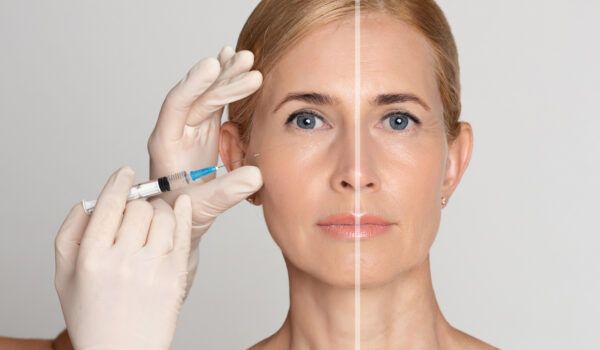
Botox works when lines fade. The treated area will seem smoother and invigorated.
When your lines begin to disappear, you know it is working. After treatment, the affected area will look smoother and more revitalized.
Some patients report feeling tight or heavy after their first treatment. This is normal and should go away after a week or two. When Botox begins to wear off, most people notice the return of dynamic lines caused by facial expressions and movement.
How to locate a service provider
First and foremost, only a practitioner who has received the necessary medical board certifications should administer Botox to you. In most cases, patients prefer to see professionals who have earned board certification. If you are unsure of where to find a qualified medical specialist, it is best to consult with your primary care physician.
In conclusion
Before deciding to get Botox injections, you should give it some serious thought. Despite being straightforward and generally safe, the treatment is still elective and carries some risks.
Knowing the potential side effects, as well as the ideal dosage and time frame for your specific situation, can help you make a well-informed choice.
The Dentox program is dedicated to educating healthcare providers on how to safely and effectively inject patients with Botox. Dentox can help your business grow while also enhancing the quality of care you provide to current customers.
Get started right away with a course taught by experts in the field if you want to learn the in-demand technique of botox. You can become a certified botox expert and work wonders on every client who walks through your door if you put in the time and effort required. Classes for Botox can be taken online at https://dentox.com/all-courses/botox-training/, and live courses that involve real patients can be taken at https://dentox.com/live-courses/.
How about “Berries before Botox” for Beautiful Skin?


All parts of the body, including the skin, require proper nutrition, and food is the primary supply.
Can You Get Healthier Skin From Your Diet?
Once upon a time, people believed that topical skincare products that penetrated the skin were responsible for its clear appearance. Now more than ever, people are discussing internal approaches to better skin.
Supplements are marketed as a way to reduce the signs of aging, and online experts counsel eating a certain diet to clear up acne. So, can you really achieve “excellent” skin with diet alone?
In what ways does one’s diet impact skin health?
Food is the primary source of nutrition for our bodies, including our skin. The skin is an organ, after all. Our skin needs the same macro- and micronutrients that help our muscles, brain, and heart function well in order to combat germs, inflammation, and the breakdown of skin cells, as well as to repair and regenerate new skin.
A review of the studies on the impact of nutrition on skin health was published in 2021 in the journal Nutrients. It was discovered that, in the most trustworthy trials, supplementation with nutrients or general dietary changes was linked to better measurements of skin elasticity, facial wrinkling, roughness, and color.
Even if you regularly apply topical treatments like retinol (vitamin A), vitamin C serums, and zinc-based compounds, you may be missing out if you don’t get enough of these nutrients in your diet. The paper compared exterior therapies (such as creams and lotions) with internal ones (such as eating healthy foods) and concluded that the most effective method to enhance the state of the skin is to supply it with needed nutrients, both outwardly and—importantly—internally.
Consume the rainbow
In terms of the “best” diet for healthy skin, a varied intake of fruits and vegetables of various hues is recommended.
Because foods of different colors contain different nutrients (for example, orange foods derive their color from carotenoids, a form of vitamin A), eating the rainbow is a surefire way to replenish your body’s supply of essential micronutrients. The polyphenols found in these foods have been shown to reduce the effects of free radicals on the skin, thereby delaying the onset of skin aging.

Due to the fact that foods of different colors contain different nutrients, eating the rainbow is a surefire method to replenish your body’s essential micronutrients.
A Low-Glycemic Index Diet
According to a review published in Healthcare in 2021, a low glycemic index (GI) diet is also significant for controlling skin issues. Researchers found that a high glycemic index (GI) diet increases sebum (acne-causing oil) because it causes a rise in blood sugar and, in turn, insulin production, which in turn increases sebum excretion.
Can better skin really just come from eating?
The solution isn’t necessarily to eat more salads and take multivitamins. Although a wide variety of nutrients are required for healthy skin, there are very few circumstances in which consuming more than the recommended amount is advantageous. Supplementing with these nutrients is essentially useless unless we already have a deficiency.
According to one study published in 2017 in the journal Nutrients, the advantages of vitamin C supplements depend on a person’s baseline status, with the supplement having less of an effect on someone whose dietary consumption is already sufficient.
Beyond Nutrition
Improving one’s diet isn’t the only way to have better skin. The skin is the body’s largest organ and the first line of defense against its surroundings; therefore, it is subject to a wide variety of environmental and internal influences. The sun, cigarettes, alcohol, and stress are just a few of the numerous factors that can affect our skin’s appearance and health.
According to a study published in the Journal of the European Academy of Dermatology and Venereology, stress is associated with transient but significant alterations in the neurological, hormonal, and immunological systems, which in turn alter the skin’s protective barrier. According to a 2017 article by researchers from Tokyo University, sleep deprivation has a greater impact on skin diseases than one’s diet or eating habits.
“Botox after Berries”: Do you still need it?
While it’s true that diet isn’t the only factor in skin health, eating healthily can help us look our best. Eating a rainbow also has other health benefits beyond just a more radiant appearance. Yet, there are several determinants of healthy skin that are beyond our control, such as our age and heredity.
Keep in mind that there are no diet, cream, or extra eight hours of sleep that can give you a flawless, filter-worthy complexion like the ones on Instagram.
Botox procedures can leave your complexion more supple and luminous while minimizing the appearance of fine lines and wrinkles, which can make you look younger. Its use can reduce wrinkles and other aging symptoms.
Dentox can teach medical professionals how to administer Botox in a secure and efficient manner. You can choose to attend a class at one of our many easily accessible sites throughout the United States, or you can benefit from our practical online learning alternatives to study whenever it’s most convenient for you. You may find information about our live and virtual courses at https://dentox.com/live-courses/ and https://dentox.com/all-courses/botox-training, respectively.





